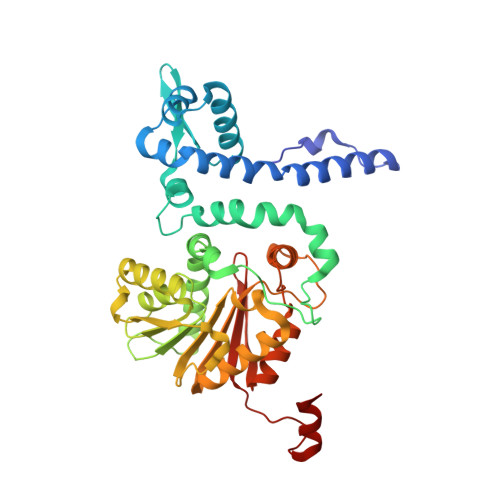Expanding the eukaryotic genetic code with a biosynthesized 21st amino acid.
Wu, K.L., Moore, J.A., Miller, M.D., Chen, Y., Lee, C., Xu, W., Peng, Z., Duan, Q., Phillips Jr., G.N., Uribe, R.A., Xiao, H.(2022) Protein Sci 31: e4443-e4443
- PubMed: 36173166
- DOI: https://doi.org/10.1002/pro.4443
- Primary Citation of Related Structures:
7UX6, 7UX7, 7UX8 - PubMed Abstract:
Genetic code expansion technology allows for the use of noncanonical amino acids (ncAAs) to create semisynthetic organisms for both biochemical and biomedical applications. However, exogenous feeding of chemically synthesized ncAAs at high concentrations is required to compensate for the inefficient cellular uptake and incorporation of these components into proteins, especially in the case of eukaryotic cells and multicellular organisms. To generate organisms capable of autonomously biosynthesizing an ncAA and incorporating it into proteins, we have engineered a metabolic pathway for the synthesis of O-methyltyrosine (OMeY). Specifically, we endowed organisms with a marformycins biosynthetic pathway-derived methyltransferase that efficiently converts tyrosine to OMeY in the presence of the co-factor S-adenosylmethionine. The resulting cells can produce and site-specifically incorporate OMeY into proteins at much higher levels than cells exogenously fed OMeY. To understand the structural basis for the substrate selectivity of the transferase, we solved the X-ray crystal structures of the ligand-free and tyrosine-bound enzymes. Most importantly, we have extended this OMeY biosynthetic system to both mammalian cells and the zebrafish model to enhance the utility of genetic code expansion. The creation of autonomous eukaryotes using a 21st amino acid will make genetic code expansion technology more applicable to multicellular organisms, providing valuable vertebrate models for biological and biomedical research.
Organizational Affiliation:
Department of Chemistry, Rice University, Houston, Texas, USA.
















